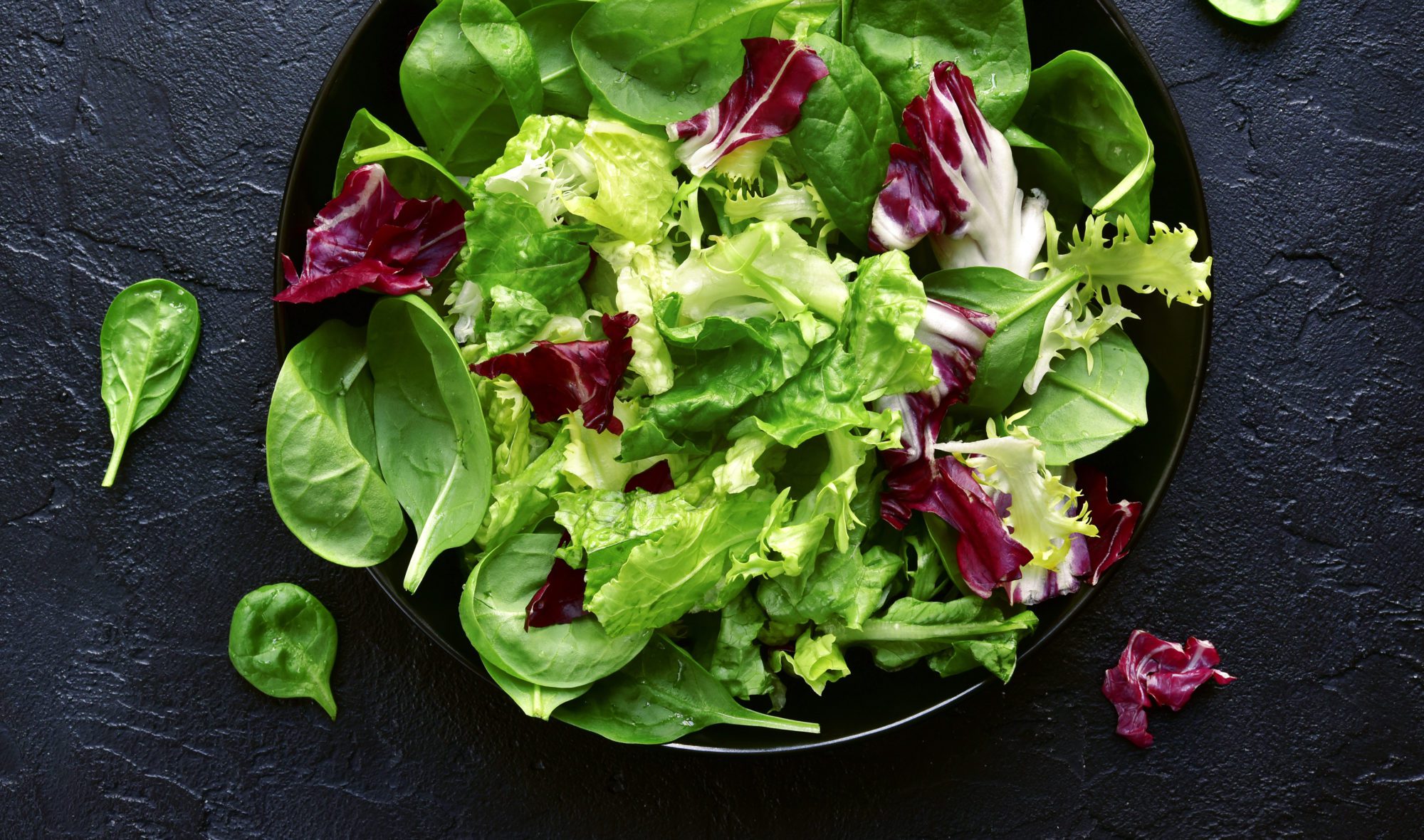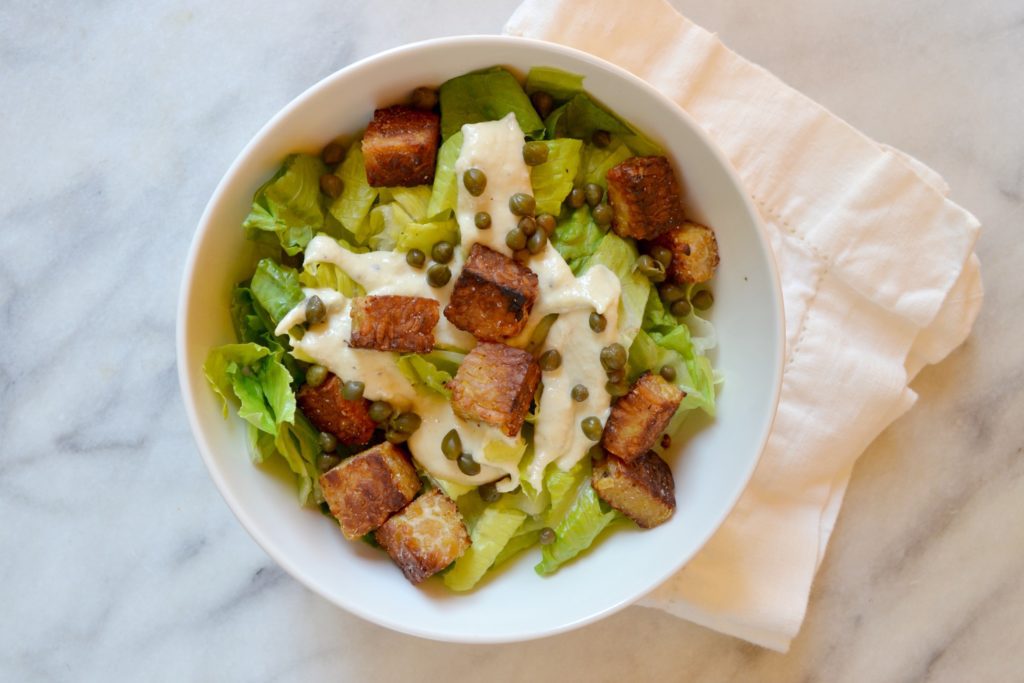
Join PN Level 2 for less than $9 USD/day! Affordable monthly payments now open.

Also known as “Cos lettuce”, Romaine lettuce is a hardy, nutritious lettuce that is ubiquitous among salads. Romaine lettuce is slightly bitter and slightly sweet, with a satisfying crunch. Like many leafy greens, it is low in calories but high in nutrients, particularly vitamin K, vitamin A, folate, and molybdenum. You will love Romaine lettuce, but so do teensy weensy bugs. Wash the leaves well (or take advantage of the extra protein).
The workhorse of lettuces, Romaine lettuce is sturdy, reliable, and nutritious.
Most of the Romaine lettuce we eat in North America is grown in more temperate regions, such as Florida and California, and in warmer seasons, Canada. However, it can also be grown in hothouses year round.
While iceberg lettuce is still likely the sweetheart of lettuces in North America, its favor is declining whereas demand for darker, more nutrient-rich lettuces like leaf lettuce and Romaine lettuce is growing rapidly. All hail the rise of dark leafy greens!
In many parts of the world, Romaine lettuce is known as “Cos” lettuce.
A head of Romaine lettuce is composed of a layered arrangement of elongated, sturdy leaves which tend to be darker toward the outer portions of the head and paler toward the inside. The leaves are crisp and furrowed and have a firm spine running down their center. When a leaf is snapped, you will notice that a small amount of milky fluid is released at the spine. This fluid is slightly bitter and contributes to Romaine’s complex flavor.
Generally speaking, Romaine lettuce has a more robust flavor as compared to other common lettuces such as iceberg or butterhead lettuce. However, Romaine lettuce possesses a range of flavors even within the same plant; The outer, darker leaves are grassier and more bitter tasting while the inner portions are sweeter and more delicate tasting.
Romaine lettuce has a lovely crunch and a high water content, making it a refreshing and texturally satisfying addition to salads or sandwiches.
1 cup of raw, shredded Romaine lettuce (about 47g) has 8 calories, 0.6g protein, 0.1g fat, 1.6g of carbohydrates, 1.0g fiber, and 0.6g sugar. Romaine lettuce is an excellent source of vitamin K, vitamin A, folate, and molybdenum, and a good source of potassium and manganese.
Romaine lettuce is widely available and can be found at most grocery stores and fruit and vegetable markets.
Typically it is sold fresh in loose heads, in packages of Romaine hearts (which include only the milder-tasting inner leaves), or in “ready to eat” bags, where the lettuce has already been chopped and washed.
In whatever form you select, choose Romaine with sturdy leaves free of wilting, browning, yellowing, or sliminess. Also avoid leaves with many little holes in them, as this may be a sign of a pest invasion. You may notice that some leaves have a little rust-colored tinge where the leaf has been cut. While this is not harmful, this is a sign of oxidation and may indicate how recently the lettuce was harvested. Unless you are buying fresh-picked farm produce, a little bit of oxidation (especially near the base of the plant where it was picked) is hard to avoid.
Store Romaine lettuce in a plastic bag in the fridge. Avoid storing it near the back of the fridge, where it is the coldest, in order to prevent frost damage.
To prolong freshness and crispness, you can also slice off the very bottom portion of a head, immerse the base in a bowl of water, and store in the fridge.
If working with a whole head of Romaine, first remove any tough-looking or wilted outer leaves. Then, slice off an inch or so at the base, and another half-inch or so near the tips. These parts tend to be exceptionally bitter.
Chop the remaining portion into desired slices and place in a colander. Run the colander under cool water, and toss the leaves with your hands until all bits of dirt and any potential overly-friendly little bugs are washed off. Alternately, you can also place the leaves in a bowl of cool water, swish the leaves around to loosen any grit, drain the water, and repeat until the water remains clear. Dry the cleaned leaves in a salad spinner, or lay them out dry on a clean tea towel.

Crisp romaine leaves are adorned with crunchy tempeh cubes that take the place of croutons and also serve as a source of lean protein. A creamy cashew-based dressing finishes off this vegan twist on a classic recipe, which is just as satisfying and delicious as the original (if not more so!).
Prep Time: 10 minutes Cook Time: 10 minutes Yield: 3 servings
For the dressing:
First, soak your cashews. Place them in a glass and cover with water. Soak whole nuts for four hours, or cashew pieces for two hours. Once soaking time is done, drain and rinse your cashews in a colander.
Next, put all ingredients in a high-powered blender or food processor and process until smooth. Put aside while you assemble your salad.
For the salad:
Generously coat your skillet with olive oil, and place over medium-high heat. Once the oil is hot, place cubed tempeh in the skillet, toss so that all pieces are covered in oil, and then let them brown, occasionally turning the cubes so they brown on each side.
Once cubes are all golden and toasty, turn off the heat and sprinkle with salt, and allow to cool slightly.
In large bowls, assemble your salads. Place romaine lettuce in the bowl and top with tempeh and a sprinkle of capers. Dollop a couple of tablespoons of dressing on top and toss before serving. Eat immediately.
Precision Nutrition’s Encyclopedia of Food expands every single month as we highlight new foods and showcase beautiful food photography. If you’d like to stay up to date, simply click this link. From there, we’ll send you a FREE copy of our recipe book. We’ll also let you know when new and delicious foods are added to the site.
Also known as “Cos lettuce”, Romaine lettuce is a hardy, nutritious lettuce that is ubiquitous among salads. Romaine lettuce is slightly bitter and slightly sweet, with a satisfying crunch. Like many leafy greens, it is low in calories but high in nutrients, particularly vitamin K, vitamin A, folate, and molybdenum. You will love Romaine lettuce, but so do teensy weensy bugs. Wash the leaves well (or take advantage of the extra protein).